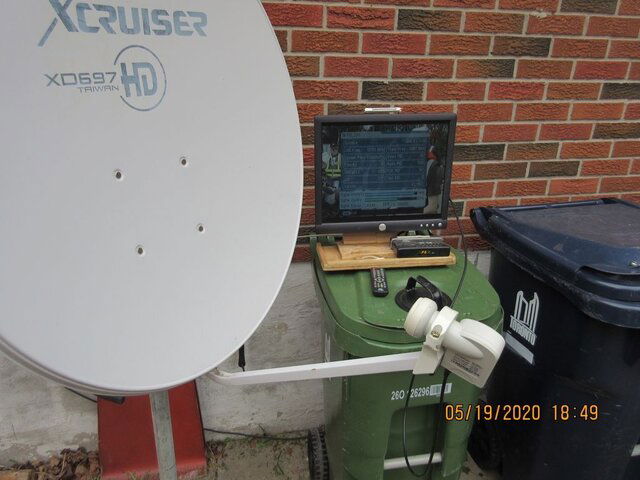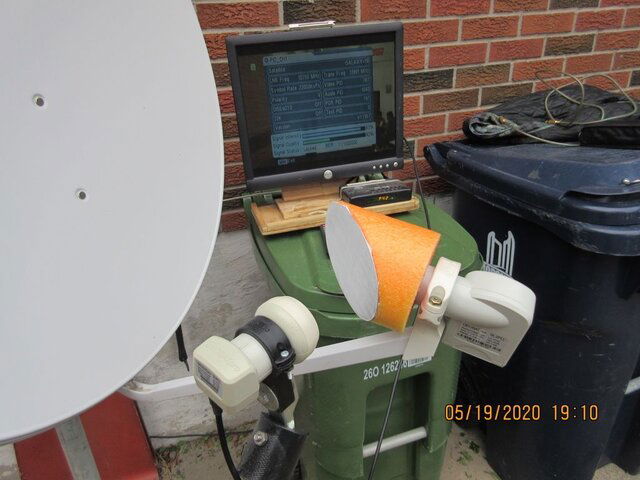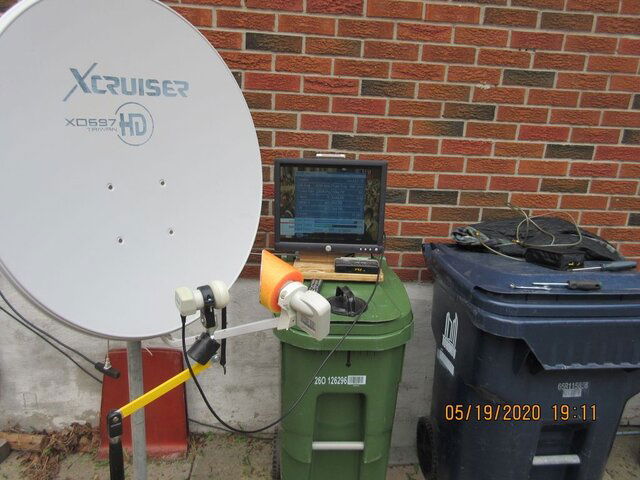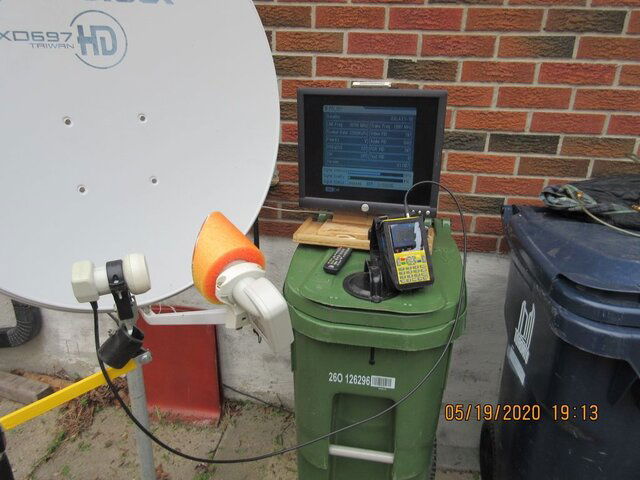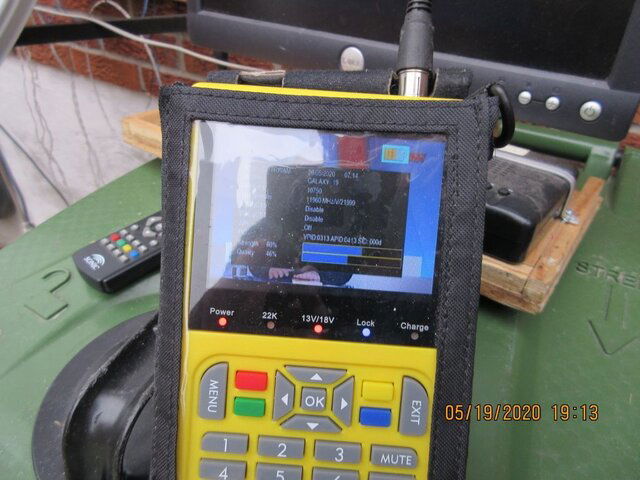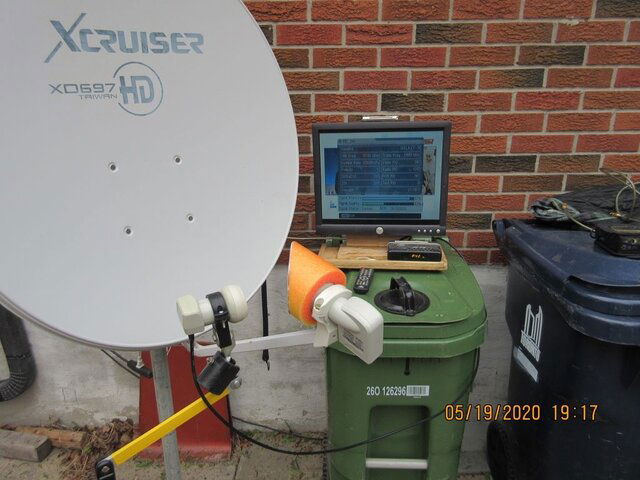I was curious if I could check in easy way if a dish was still pointed correctly, (and its LNBF might be damaged), WITHOUT REMOVING (UNSCREWING)
THE EXISTING LNBF.
Assuming that I have another, tested LNBF and any small receiver.
Reflector (made of metallized paper) was glued to a piece of sponge which had 45 degree angle.
The sponge has a hole which fits snugly on existing LNBF.
Second LNBF was placed next to 45 degree "mirror" - and it received signal, unfortunately, much weaker, (Q = 30%).
Now, the existing LNBF cable can be unscrewed, and small testing receiver connected to existing LNBF.
If there is no program, it means the existing LNBF is damaged.
Maybe, if I used better reflector, not paper, but thin aluminum plate, the reflected signal could be better... I have to test it later.
If there is no reflected signal on added LNBF, it could indicate that the dish has moved from its original position.
Probably, moving the added LNBF around a little, might catch the program and thus indicate in which direction the dish shifted.
This will not work if the dish has moved more than a few degrees.
10 photos, some annotated, follow.
Cheers, polgyver
THE EXISTING LNBF.
Assuming that I have another, tested LNBF and any small receiver.
Reflector (made of metallized paper) was glued to a piece of sponge which had 45 degree angle.
The sponge has a hole which fits snugly on existing LNBF.
Second LNBF was placed next to 45 degree "mirror" - and it received signal, unfortunately, much weaker, (Q = 30%).
Now, the existing LNBF cable can be unscrewed, and small testing receiver connected to existing LNBF.
If there is no program, it means the existing LNBF is damaged.
Maybe, if I used better reflector, not paper, but thin aluminum plate, the reflected signal could be better... I have to test it later.
If there is no reflected signal on added LNBF, it could indicate that the dish has moved from its original position.
Probably, moving the added LNBF around a little, might catch the program and thus indicate in which direction the dish shifted.
This will not work if the dish has moved more than a few degrees.
10 photos, some annotated, follow.
Cheers, polgyver
Attachments
-
 thumb_IMG_5516_1024.jpg139.6 KB · Views: 315
thumb_IMG_5516_1024.jpg139.6 KB · Views: 315 -
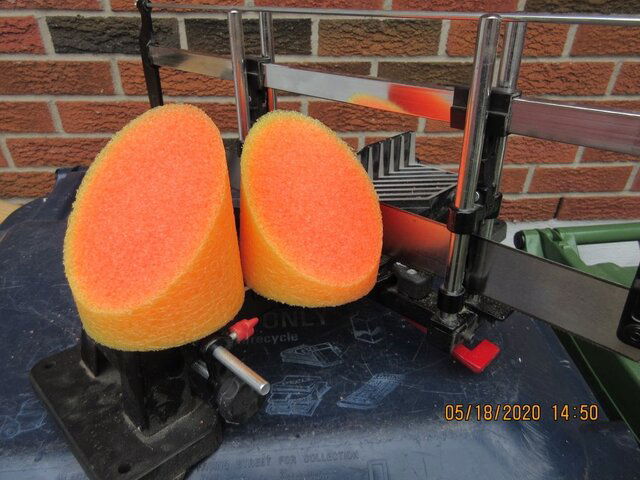 thumb_IMG_5518_1024.jpg134.9 KB · Views: 325
thumb_IMG_5518_1024.jpg134.9 KB · Views: 325 -
 thumb_IMG_5519_1024.jpg69.7 KB · Views: 333
thumb_IMG_5519_1024.jpg69.7 KB · Views: 333 -
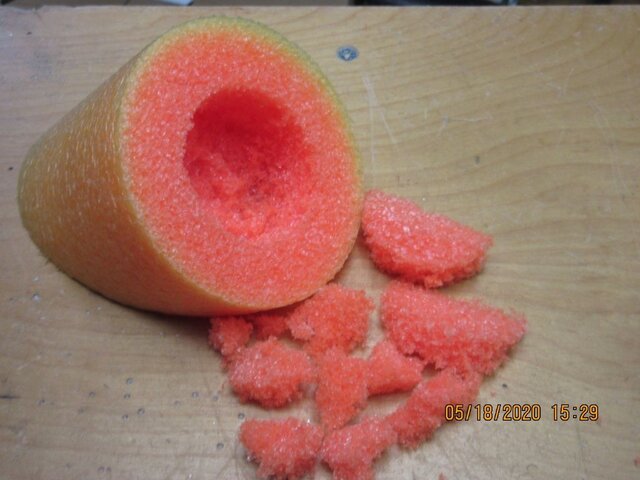 thumb_IMG_5520_1024.jpg90.8 KB · Views: 353
thumb_IMG_5520_1024.jpg90.8 KB · Views: 353 -
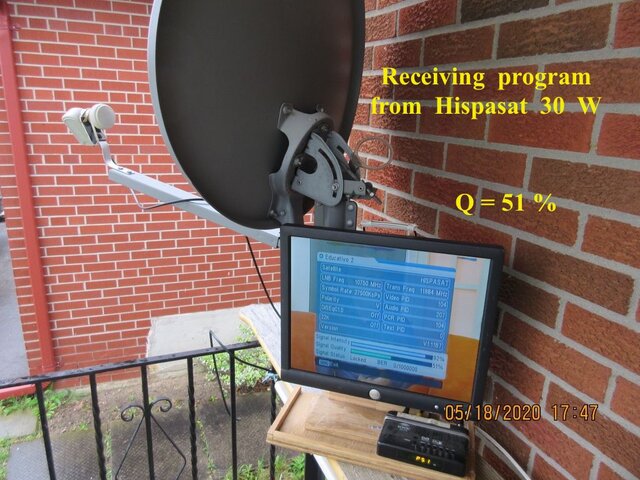 thumb_IMG_5521_1024.jpg156.8 KB · Views: 318
thumb_IMG_5521_1024.jpg156.8 KB · Views: 318 -
 thumb_IMG_5522_1024.jpg150 KB · Views: 313
thumb_IMG_5522_1024.jpg150 KB · Views: 313 -
 thumb_IMG_5523_1024.jpg129.9 KB · Views: 331
thumb_IMG_5523_1024.jpg129.9 KB · Views: 331 -
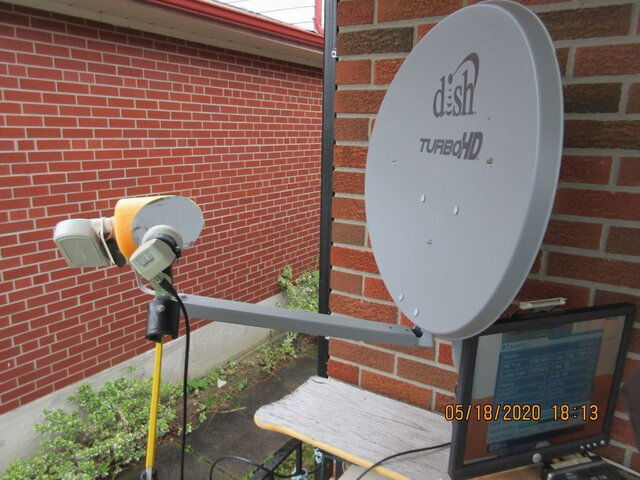 thumb_IMG_5525_1024.jpg136 KB · Views: 328
thumb_IMG_5525_1024.jpg136 KB · Views: 328 -
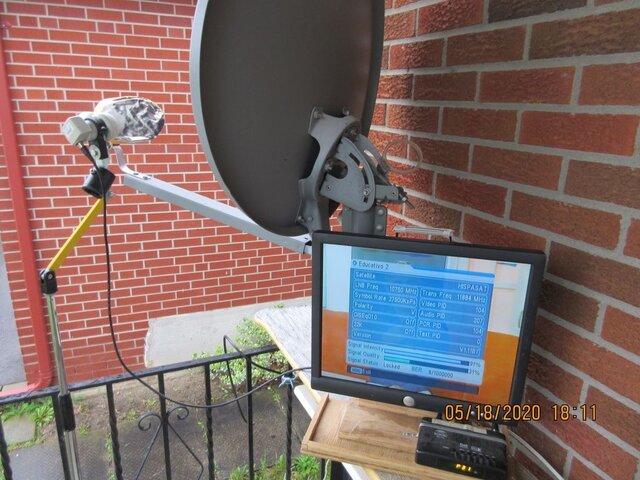 thumb_IMG_5524_1024.jpg147.4 KB · Views: 319
thumb_IMG_5524_1024.jpg147.4 KB · Views: 319 -
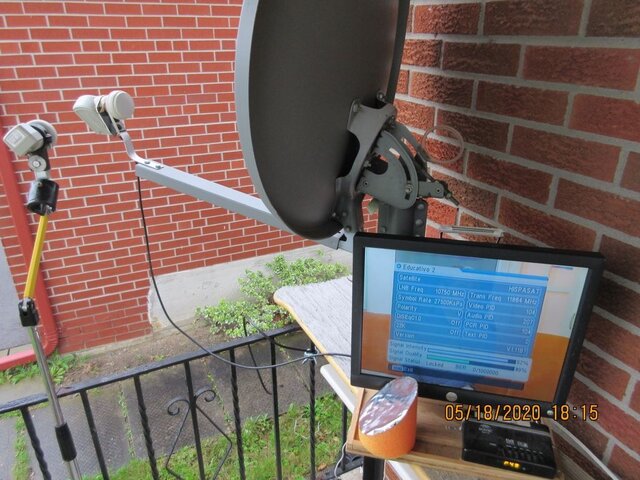 thumb_IMG_5526_1024.jpg152.9 KB · Views: 338
thumb_IMG_5526_1024.jpg152.9 KB · Views: 338


